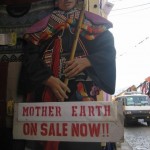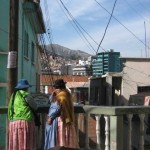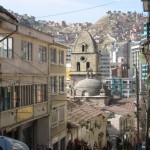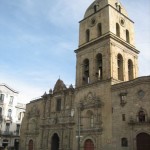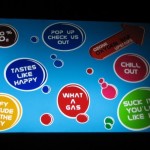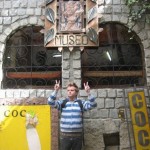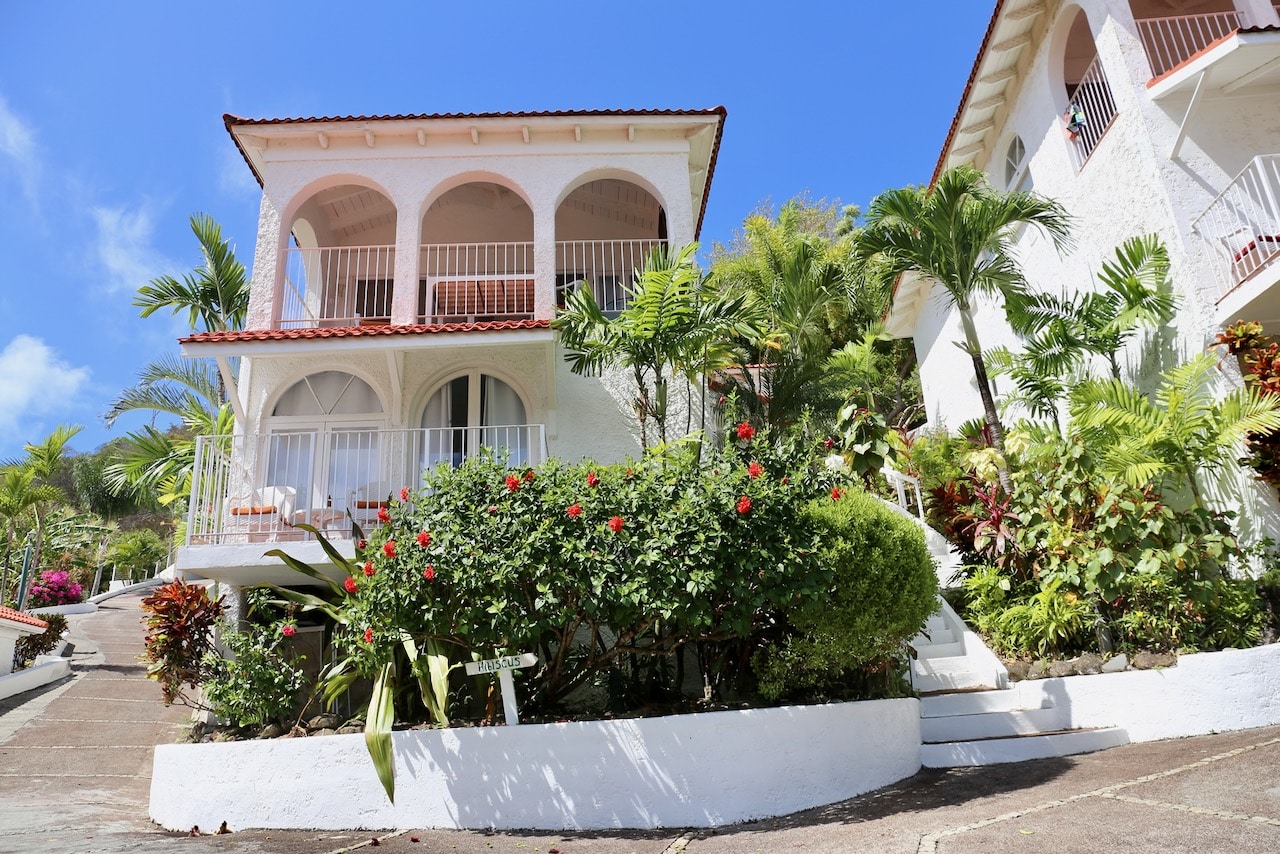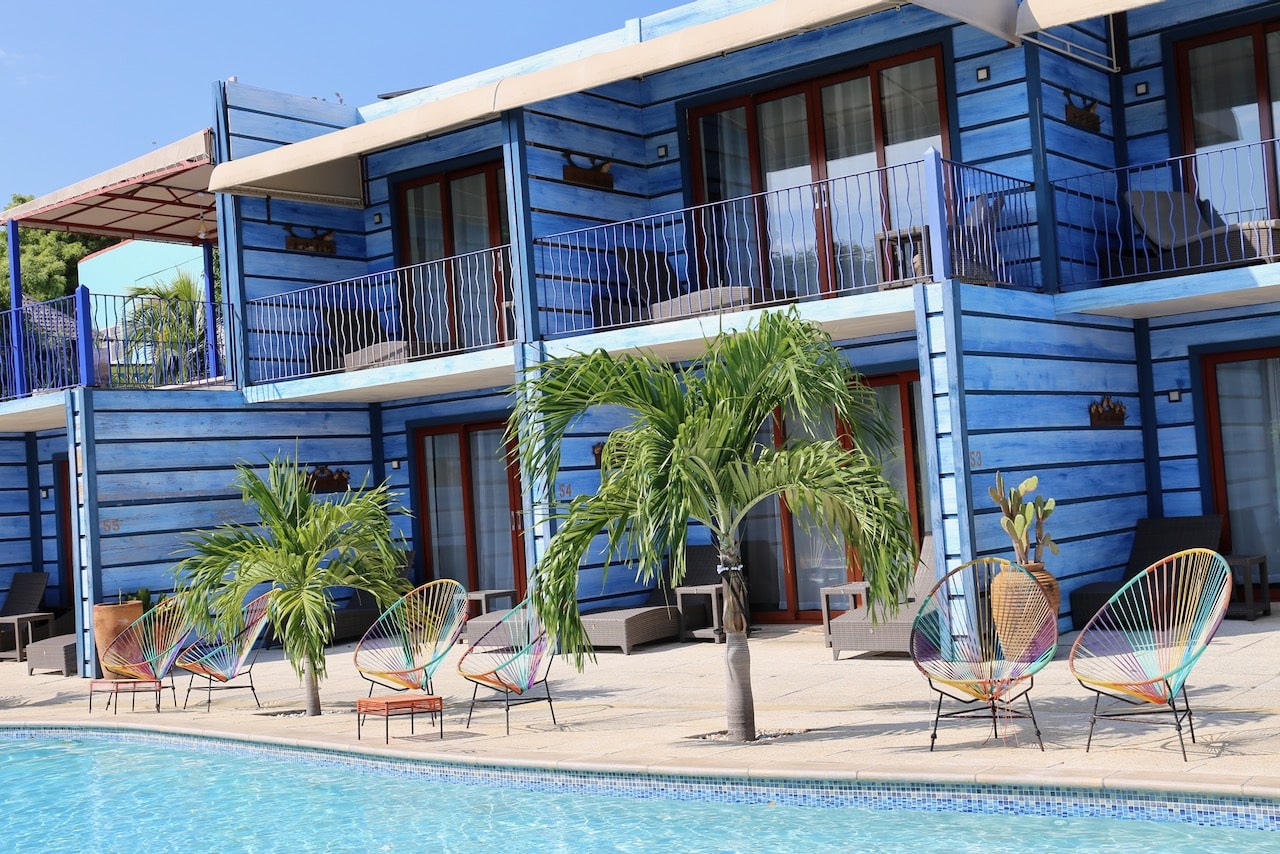We hailed a taxi in the morning after checking out at the front desk and sped up a steep mountain which afforded us the ability to stare over the city of Sucre behind us. Several small worship huts were built into the side of the mountain side. Locals come here to bring gifts such as flowers and lace to the virgin or other saints. At the airport surprisingly we ran into two girls from Connecticut who we lived with at Chillhouse back in Buenos Aires. We all gave big hugs and chatted about the last few weeks in which we had been apart. I was captivated by their stories especially their guided mine tour in Potosi. They both clearly hated the city and the tour was horrific. The mines used to be the most famous silver mines in the world. The mines are still active however and incredibly unsafe tours of the mines can be taken here by unqualified guides. The government of Bolivia seems to have no health and safety rules when it comes to tourism. Everything here is ¨at your own risk.¨ The girls said they spent two hours inside the mines barely able to breath, often in the pitch black. They were surprised that tours were even allowed when workers were actually pushing ore beside them. One of the girls said the youngest worker in the mine is eight years old! How tragic that they don´t even have laws regarding the age children can work and the conditions they are subject to.
Our flight ended up being delayed for about an hour as the winds were apparently too fierce to take off. We walked into the waiting area without ever going through a security check. We chatted about how talking about bowel movements with other travelers becomes somewhat commonplace. The question regarding how your BM is doing every day is similar to asking ¨how are you doing,¨ back at home. We walked out onto the tarmac with a huge Boeing 727 aircraft in front of us. We had never heard of the airline Aero Sur so when we finally saw the modern aircraft our nerves fell to the way side. We turned to look behind us to witness a very Bolivian moment. Hundreds of families stood on the top of the terminal roof waving and cheering as passengers boarded their planes. There were big red letters spelling out Sucre across the top of the roof and we could spot little children dangling over these letters. This made me laugh as Bolivia in my mind is characterized by dangerous moments. Never will I ever see hundreds of people standing on the top of Pearson´s terminal. Safety first people!
Our flight was a short 45 minutes of breathtaking scenery. We flew through amazing mountainous scenery which started off as rolling green hills and became more and more similar to the snow capped Rocky Mountains as we arrived in La Paz. As I stared down at the zig zagging highways bellow I was so glad we had avoided taking the 11 hour night bus across this mountain range. We finally flew over La Paz which made my mouth drop. This huge mega city is situated in a valley surrounded by huge snow capped mountains. The city really takes your breath away from above. After seeing nothing but mountains in Bolivia we came across our first glance of flat lands. Directly above La Paz you can find a flat as a pancake city called Al Alto. The city is populated with just over one million inhabitants and its claims to fame are: being incredibly dangerous and a rather surreal location on the side of a cliff that just drops straight down into the city of La Paz bellow. As our plane descended over Al Alto I looked out onto the sprawl bellow and was shocked by the number of cathedral bell towers. It seems like you could find a church every two blocks in this small city of one million. Perhaps the locals here need as many Church’s as possible to repent their sins? All I know is that everyone I have ever talked to about La Paz says you need to avoid Al Alto like the plague. This is the city where we heard the gruesome story of a tourist from Australia being stabbed in the knees at an ATM!
The La Paz skyline features the huge snow capped Mount Illamani which is 3660 meters above sea level which we could see shining in the mid day sun as we slowly drove down the winding cliff side streets to the heart of the capital. I was really struck by the beauty of La Paz. It is the only city I have ever been to where you can see the entire city at one glance. It is something like looking down at the interior of a fish bowl. You can see across the city for miles and miles. As the city has grown the residential space has shrunk and you can see the desperate attempt of architects to continue growth as houses are built hugging the side of the valleys mountain cliff faces. We jostled down small, busy streets. Past markets which spilled out onto the street.
We arrived at our hotel to be greeted by one of the craziest men we had ever met. He first told us he had no rooms until we told him we were Canadian in which suddenly three empty rooms appeared. We paid the man and he owed us 20 bolivari change. We asked for the change and he said ¨I have no money.¨ We rolled our eyes and insisted he give us the money he owed us. He then laughed and said ¨this is Bolivia, give me 20 minutes.¨ It seems that even the locals are in on the joke that Bolivia is so backward. We walked up to our room and waited five minutes for the attendant to finish making our beds. I looked out the window to our gorgeous view. I was staring at a run down building about one foot from the window sill. The cement here seems to be rather cheap as you can tell when it rains it runs from the bricks down the sides of the building.
We were located conveniently two steps from the cities notorious Witches Market. We were living right in the heart of the tourist area, on Sagarnaga Avenue (which is full of police and considered very safe even to walk through at night). The Witches Market is not as terrifying or eerie as one might think. The long street is lined with rather pushy market vendors who shove random things in your face (such as fossilized nuts). We had waited over two months to really take shopping seriously and now we were at the continents most expansive, sordid and cheap market. The area is called the Witches Market because vendors sell the items needed for indigenous offerings. Baskets full of dried out Llama fetuses were the most interesting items for sale. The market shops that lined the street were full of glass cases containing a wild assortment of silver jewelry. Various sizes of Incan statues, wool clothing and beautifully beaded necklaces and bracelets could be purchased for mere pennies. You know when you go shopping and spot the most amazing product that you simply must have? Well I experienced this rush at a small stand that was selling hand knit Llama wool hats. The hats here are full of brilliant rainbow like colours. I found a hat that fit my hat perfectly and which colours amazed me: pink, yellow and green. I put it on my head and felt that the indigenous women who made this hat must have had me in mind when she knit it. I smiled while walking down the street with my new hat on the top of my head. I started to barter for a silver ring with green turquoise centered stone that caught my eye. I finally bought the ring for half of what the lady originally asked for it. Sarah and I chatted about the fact that we felt very safe in La Paz thus far and were glad we had not been stabbed in the knees. Sarah jokingly said ¨if someone tries to rob me, I´ll smack them so hard in the face they´ll fall over.¨ We huffed and puffed up and down the cities San Francisco like streets trying not to lose our breath entirely. We stopped by the cities Medieval Cathedral and at this point realized we had not eaten all day and the altitude was making us dizzy. We stopped at Restaurant Alamir which serves up cheap Arabian dishes. We both shared a liter of Fanta, hummus and pita, falafel, chicken shwarma with tabbouleh and Arabic rice. We walked back towards the hotel passing by a group of ten men dancing in a circle with traditional Bolivian drums and wooden flutes.
After talking to a girl from England who had enjoyed jungle tours in both Bolivia and Peru I felt the need to push Sarah into booking a flight to the jungle in Bolivia. It is about 90 percent cheaper to see the Amazon Basin in Bolivia so it all made sense and we soon found ourselves impulsively sitting in a travel agents office just as it was closing. We told the owner, a loud German man, that we wanted to fly to the jungle as soon as possible. After about thirty minutes of running back and forth from the airline Amazona and ensuring Sarah that this impulsive decision was a correct one we were booked and ready to enjoy a two night and three day jungle adventure. We walked back to the hotel and asked the front desk to get us a taxi to our dinner date destination. We were told rather firmly to only take Radio Taxi as all other taxis are dangerous and illegitimate. We stood out on the street with a young man from the hotel who was flagging a taxi down for us. We soon realized how easy it would be to get kidnapped if you didn´t know the proper taxi to take. Only one out of every ten taxis is actually legitimate. Most are simply cars with random locals who need to make some money (they stick a rather corny yellow taxi sticker on the side of the car however so it surely can be misleading). Once we got in our taxi we noticed a policeman writing down the license plate of our taxi. Apparently they write down all information when tourists get in taxi so it is easier to track them down if they mysteriously vanish.
We soon arrived at La Quebecois which is located on the other side of town. We stepped into the front door just as our two lovely dinner companions arrived. We were sitting in one of the fanciest restaurants in the capital. I have to admit it was rather romantic. I noticed all of the finer details such as warm fireplace, lace table cloths and a proper seven set utensil place setting. We glared at the huge menu and I ordered the table a bottle of agua con gas and a bottle of Chilean Sauvignon Blanc. I started with a plate of crepe de pollo con vino blanco. Slurped a bowl of French Onion soup. I slowly devoured my entree, pollo estrogon en salsa de crema et vino. I ordered this item as I had never heard of estrogen chicken…I was soon told that estrogon is actually a variety of Indian spices. The restaurant has an entire page dedicated to the special Trout that are fished out of Lake Titicaca. These trout are the largest of there kind in the world.
Dinner conversation was all over the place. We most enjoyed the girl’s hellish Bolivian bus story which goes like this: they took the horrid bus from Uyuni to Potosi just as we had. There story was a bit more fantastical then ours as they had a rather vulgar happenstance. An older couple, around 70 years old were sitting directly across from them on the ghetto bus. The wife takes out a plastic bag, the man pulls down his pants and starts peeing in the bag in front of the entire bus full of people. The girls are in shock and feel ill. The woman ties the bag in a knot and waves to the girls to move back against the back of their seats. She proceeds to throw the bag of piss out the window, past the girls. Truly terrifying, truly Bolivia.
After dinner we walked two blocks up the street, while huffing and puffing. Sometimes it is really hard to remember how high the altitude is. I often find myself sitting up and walking at a normal pace only to find myself half dead and out of breath on the side of the road. We walked into Ramjam the cities swankiest bar. All of us were in shock as we walked into an incredibly well decorated and stylish two floor club. We walked up the stairs as we were surrounded by euro beats. We all kept asking ourselves if we were actually in Bolivia! It was an oddly comforting space. On the top floor we walked through a glass door into the worlds most famous oxygen bar. This was my first oxygen bar experience and I was impressed by the ambiance of the chill out room. Bean bag chairs, magazines, mood lighting and Play Station II. This was a place to suck up pure oxygen in one of the highest cities on earth. We sat around a glass table which had plastic oxygen tubes hanging from overhead. Bellow the glass table top were glowing mad scientists beakers and test tubes. Inside these tubes were the concentrated scents which we could chose from. We paid five dollars for a ten minute treatment. Scent options ranged from lime, strawberry, lavender, vanilla and fuzzy peach. I chose peppermint, put on my medical oxygen mask and waited for the hiss of oxygen to fill my ear drums. We all closed our eyes and sucked up air. I read in a tourist guest book a rather lovely quote ¨A good traveler has no fixed plans and is not intent on arriving.¨
We all piled into one taxi and drove back to the Sagarnaga district of town. As we drove by I noticed that this city has no public transit. Small commuter vans can be found all over the street, typically with a ten year old child leaning outside of the window screaming down the street the driver’s next destination. We hugged our friends goodbye and soon arrived at our padlocked hotel door. Just before I headed to bed I jumped out of my skin as I realized I had left my new, favorite, perfect hat at the oxygen bar. It didn´t matter to me that it was only two dollars, I would never find such a ¨made to fit¨ hat in my life, ever again. I slept with a chip on my shoulder I assure you. In the morning we returned to the witches market to finally make our big purchase decisions. I was adamant about finding a replacement hat for my sadly lost pink and green treasure. We passed by the ¨Discount Lady¨ who we ended up spending over thirty minutes pestering. She screams from the street that she gives amazing discounts. When you ask how much something is, she automatically tells you how much her discount is if you buy it from her. She was a wild, short little business woman. I bargained the women down like nobodies business. I ended up walking out of the shop with a huge bag of gifts for myself for a mere 130 bolivares. We walked to the Natural Sandwich Bar where we slurped on yogurt, banana, pineapple smoothies and munched on multigrain, chicken breast and avocado sandwiches.
We spent the next hour walking through the cities famous Coca Museum. The museum discuses in detail everything from the early history of the cocaine plant, its uses, and also emphasizes the tragic consequences of drug abuse in its harshest of forms. The following are interesting facts I jotted down: They have dated coca use by humans to 2500 BC as two mummies were found with the leaf in preparation pots. The coca plant is the oldest cultivated plant in the New World. In 1551 the Catholic Church condemns the cocaine leaf as diabolical as it forms an obstacle to Christianity. A few years later the churches position changed as they observed that an increase in coca consumption by indigenous slaves increased their production. The mines in Potosi around 1573 were the Coca leaf consumption hub in South America. At this time Potosi was as large as Paris and New York City! Workers in the mine consumed a yearly amount of coca leaf, the equivalent of 450 kg of gold! The first western coca consumer in history was Sigmund Freud in the year 1884. He wrote about the effects of the leaf in a much talked about journal article. Shortly after, in 1886 Coca Cola was first sold to the public. The coca leaf was essential for workers in the mines as it gave them an incredible amount of nutritional value (which was important as they were not allowed to break for meals). Miners were expected to work 48 continuous hours, no wonder they needed a bit of cocaine! Apparently the average worker spent 12% of their wage on coca leaf. A recent study states that 92% of Andean men and 82% of Andean woman use coca leaves on a daily basis. Ethnocentric aside, many western doctors and professionals believed that coca was the cause for the wide spread poverty in Bolivia and Peru. I was intrigued by the ritual and religious area of the museum which compared the coca leaf to wine used by Christians during communion.
The following are the quantities of narcotic observed in the following preparations of the coca leaf:
Chewing 289 mg ml
Nasal 474 mg ml
Injected 1000 mg ml
We stared at several pictures of coca fields which are cultivated on mountain sides across the continent. They reminded me a lot of the cliff side vineyards in Germany actually. The museum finished by discussing the issues of drug addiction. ¨Similar to the fact that an orgasm from masturbation is never sufficient and quickly loses its intended feeling, the chemical orgasm realized by cocaine serves only to create a unquenched desire.¨ Reading the info about the war against cocaine we saw many pictures of eight year old cocaine dealers. The States contains 5% of the world’s population yet they consume 50% of the worlds cocaine!
The most interesting part of the museum was learning how the narcotic cocaine is made from these little green coca leaves. Men mulch the leaves in large buckets much like the grapes of fine wine. Apparently 1kg of cocaine base costs a mere 2 USD to produce. The very last room contained several coca cola bottles and discussed how the flavor of the worlds most consumed beverage (more than water) has its roots in coca tradition. As we walked out of the museum I found it rather chilling to see a short lady selling coca leaves out of a huge potato sack as she sat beside a huge Coca Cola sign painted on the building behind her. If I took anything away from the museum it was simply that the coca leaf has a deeply rooted cultural significance in these high altitude Andean communities. Who knew simple green leave (which looks a lot like a Bay Leaf) could cause such controversy!
We walked to A Taste of India for dinner. The restaurant was covered in Hindi rugs, palm trees, scarves and odd little statues. I ordered a Heineken, several Garlic Naan, rice, chicken korma and chicken ticka messala. We both had our tongues hanging out of our mouths as we were not used to such spicy food. We also realized we had ordered way too much food. I tried to slowly force a few more bits of food into my mouth before my stomach burst. We hobbled back to the hotel and headed to bed by 9pm. We had to be up at 5am for our taxi to the airport, how gruesome. Before bed we chuckled at Bruce Willis in the film The Jackel. Some people should never be dubbed. As I fell asleep I dreamed of jungle adventures and was happy to realize that we had survived La Paz without a scratch!


